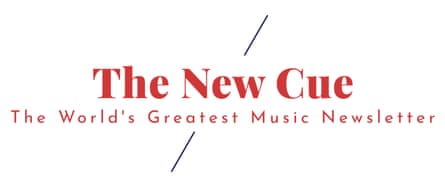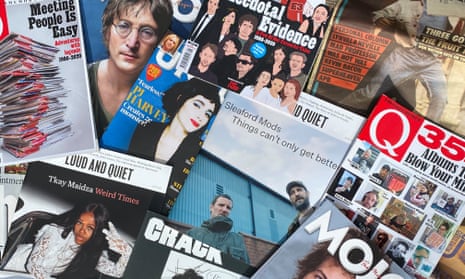The former editors of Q magazine, the British music monthly that folded in July 2020 owing to the pressures of publishing during the pandemic, have joined the growing newsletter revolution.
The New Cue, a weekly publication edited by erstwhile Q editor Ted Kessler and staff members Chris Catchpole and Niall Doherty, launches on 26 February with new interviews from artists including St Vincent, Arlo Parks and Tony Visconti, along with playlists and recommendations.
“What’s exciting to me is being able to deliver a music publication directly to the reader,” said Kessler in an interview.
The New Cue is distributed via Substack. Launched in 2018, the platform allows authors to send free and paid email newsletter subscriptions and has attracted a number of high-profile journalists seeking new publishing models, digital natives escaping struggling media brands and controversial commentators eschewing editorial interference. The Dispatch, a centre-right US politics publication, is thought to be the most successful newsletter on the platform, with annual revenues in excess of $1m.

Music newsletters have thrived on the platform, among them hip-hop publication Cabbages by Gary Suarez, the experimental-focused Tone Glow by Joshua Minsoo Kim, criticism bulletin board Music Journalism Insider by Todd Burns, Afrobeats Intelligence by Joey Akan, Michelle Lhooq’s party and protest-focused Rave New World and music video scholar Sydney Urbanek’s Mononym Mythology. Robert Christgau, first published in the 1960s and for 37 years the chief music critic for the Village Voice, recently joined the platform with Xgau Sez.
Kessler described the New Cue as “an evolution” of the final years of the Bauer Media title Q, when he was working “without editorial interference”, and particularly the last few months of its existence. “We had very little to work with, so we were more imaginative and I found that creatively satisfying, even in quite a stressful period.”
Readers could expect “snappy Q&A interviews and inspiring recommendations”, said Kessler. “I want lots of short sections that sparkle from a bigger thing that I can return to, rather than one long continuous read. There’s a massive bear trap that people fall into whereby, because there’s no limit to what length you can write in a newsletter or online, people go super long. It’s not the New Yorker.”

Bauer Media put Q magazine under review in May 2020 and shuttered it two months later. “The pandemic and lockdown has further accelerated the trends already affecting the publishing industry,” Chris Duncan, the company’s chief executive of UK publishing, said at the time. Its circulation had dwindled to 28,359, with less than half of that coming from newsstand sales, compared with a peak of more than 200,000 in 2001.
Q had been a “very lean operation” in its final years and was on course to hit newsstand sales and festival partnerships necessary for survival in February 2020, said Kessler. “But the lockdown wiped away all of that. I didn’t have any proposals for Q. I saw the numbers. Bauer did their best – no hard feelings.”
Many music magazines have struggled during the coronavirus pandemic, with some launching support schemes to attract new readers and shore up their survival. Loud & Quiet and Crack magazine recently returned to print after Covid-induced stints as digital publications, buoyed by successful subscription drives.
The first few editions of the New Cue would be free, said Kessler, followed by a monthly subscription fee of £5 or an annual rate of £55 with occasional free weeks. More than 1,200 readers had signed up in the weeks prior to launch.
Kessler said he didn’t expect newsletters to supplant traditional music media – and hoped they wouldn’t, as a paying subscriber to many print publications. The bigger threat to their survival was the free publishing model, he said. “I believe you should pay for what you consume, by and large, if it’s made with skill, sweat and love. Charge people and then you protect the wider industry.”
The months since Q’s demise had shown Kessler the challenges of the “high-quality but totally saturated” freelance market. “When I think of the brilliant Q writers who lost that regular work, I feel sick,” he said.
As much as providing a new music publication, the New Cue was about “collaboration, being part of a team, getting a rhythm going on a publication”, said Kessler. “I’m really just doing the New Cue so we can all have fun working together and celebrate with a pint after work again. I hope that comes across in the newsletters.”






